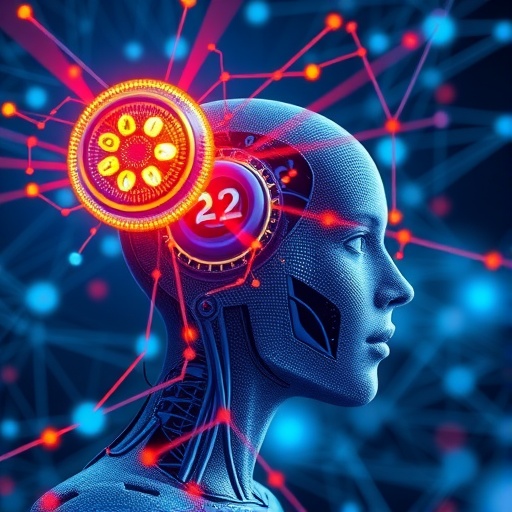In an innovative leap within the realm of educational psychology, recent research conducted by Makransky, Shiwalia, and Herlau delves deep into the transformative potential of generative artificial intelligence. Titled “Beyond the ‘Wow’ Factor: Using Generative AI for Increasing Generative Sense-Making,” this groundbreaking study, set to be published in the 2025 edition of Educational Psychologist Review, outlines how generative AI can fundamentally reshape the landscape of learning and comprehension in educational settings.
The advent of generative AI has ushered in an era where the capabilities of these systems are almost indistinguishable from human creativity. This research emerges against the backdrop of an educational landscape increasingly characterized by diversity in learning styles and vast amounts of information available at students’ fingertips. The authors argue that while generative AI has often been celebrated for its ability to produce stunning visual art or compelling text, its potential for enhancing generative sense-making—the cognitive process of weaving knowledge and ideas into meaningful narratives—remains underexplored.
At the heart of this research lies the ambitious proposition that the incorporation of generative AI tools within learning environments can facilitate deeper understanding and retention of complex concepts. The researchers postulate that these AI systems can not only assist in content generation but can also engage students in critical thinking activities that compel them to connect prior knowledge with newly acquired information. This integration could lead to a paradigm shift in how students approach problem-solving and knowledge retention.
The study presents empirical evidence suggesting that generative AI can serve as a catalyst for increased engagement among students. By leveraging AI to present content in interactive and personalized formats, learners may find themselves more invested in their educational journey. In an era where traditional pedagogical methods often fall short of meeting the needs of all learners, this approach signals a promising alternative that could bridge the gap between passive reception of information and active learning.
Furthermore, the researchers investigate the underlying mechanisms through which generative AI enhances sense-making. They emphasize the notion of adaptive learning, whereby AI can tailor content to the unique learning paces and preferences of individual students. This personalization not only facilitates comprehension but also empowers learners to explore content that resonates with them on a personal level, thus fostering a more profound connection to the subject matter.
The implications of this research extend beyond mere academic enhancement; they speak to broader societal shifts in how knowledge is consumed and created. As generative AI becomes increasingly integrated into the learning process, the potential for facilitating innovation and creativity in the classroom becomes apparent. Students are not merely passive recipients of information but active creators capable of manipulating and synthesizing data through AI collaboration.
However, the authors do not shy away from discussing the ethical considerations surrounding the use of generative AI in education. Questions arise regarding the authenticity of knowledge creation and the potential risks of over-reliance on AI tools. In light of this, the research underscores the importance of developing guidelines to ensure that the use of AI-enhanced learning remains both ethical and responsible.
As the landscape of education continues to evolve, this research serves as a clarion call for educators, policymakers, and technologists alike to reconsider the role of AI in academic instruction. The authors advocate for blended learning environments in which generative AI tools are thoughtfully integrated into curricula, fostering collaboration among students and enhancing critical thinking skills.
Ultimately, the study offers a roadmap for future exploration in the fields of educational technology and psychology. It encourages further empirical research to uncover the long-term effects of generative AI on learning outcomes and cognitive development. By pushing the boundaries of what is possible in education, this research opens the door to new methodologies that harness the full potential of both human and artificial intelligence.
As we look to the future, the incorporation of generative AI in educational settings promises to revolutionize not only how knowledge is shared and understood but also how we view the very nature of learning itself. The convergence of technology and education will require a concerted effort from all stakeholders to ensure that it is harnessed in ways that enrich the learning experience and promote deeper understanding in a rapidly changing world.
This exploration pushes the narrative beyond the superficial allure of AI advancements and dives into substantive discussions about what it means to learn in the age of technology. The synergy created between human insight and machine-generated content could represent an evolutionary leap in educational practices, paving the way for more adaptive, responsive, and innovative learning environments.
The research makes it clear that the future of education is not merely about making information available but about creating a framework where learners can thrive. By employing generative AI as a dynamic partner in the educational process, students can cultivate the skills necessary to navigate an increasingly complex information landscape.
In conclusion, “Beyond the ‘Wow’ Factor” serves as a pivotal study in the understanding of generative AI’s role in education. It inspires a vision for a future where human intelligence and artificial creativity work hand in hand, fundamentally redefining the parameters of learning, engagement, and intellectual exploration in the 21st century.
Subject of Research: Generative AI in Educational Psychology
Article Title: Beyond the “Wow” Factor: Using Generative AI for Increasing Generative Sense-Making
Article References:
Makransky, G., Shiwalia, B.M., Herlau, T. et al. Beyond the “Wow” Factor: Using Generative AI for Increasing Generative Sense-Making.
Educ Psychol Rev 37, 60 (2025). https://doi.org/10.1007/s10648-025-10039-x
Image Credits: AI Generated
DOI:
Keywords: Generative AI, Education, Learning, Sense-Making, Cognitive Development




